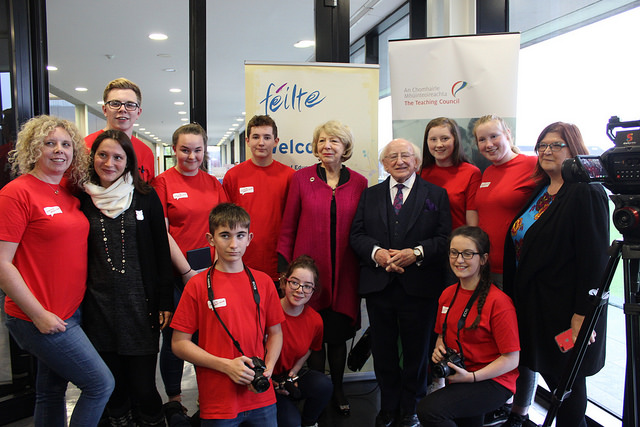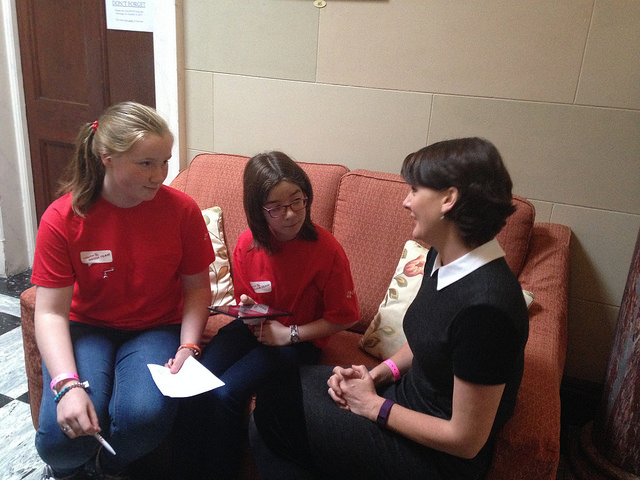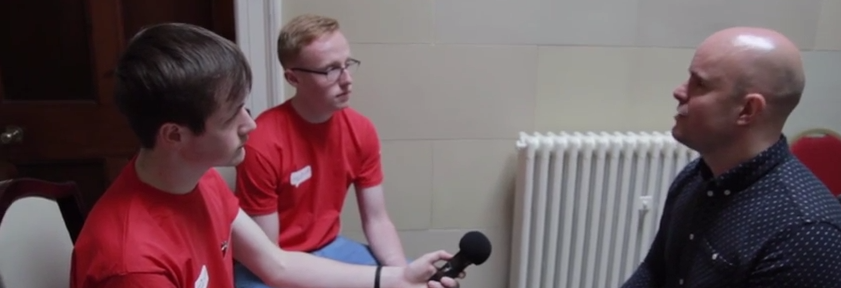Caitlin Donnelly, Chris Fennelly, and Amy Lombard roamed the floor of Feilte 2015, learning more about innovative education from various showcase presenters.
Presenters from SBP Radio broadcast via WiFi in Scoil Bhride, Portlaoise, every Friday from 9am to 9:30 throughout the school. Programmes often feature interviews with teachers, accompanied by popular music.
Physics Busking team members used simple materials to create really cool science projects. One of the projects involved lifting Amy off the conference floor purely with the power of friction. (See photo below.)
The Second Level Transfer Education Programme gives Sixth Class students an opportunity to prepare for second level education.
Brendan Colleran, secondary school teacher in Limerick, explained Castletroy College’s e-Twinning project. More than 300,000 teachers are involved in e-twinning throughout Europe.
More than 80 different showcases were on display in the RDS during Feilte 2015 with dozens of teachers providing first-hand descriptions of innovative education in Ireland.




